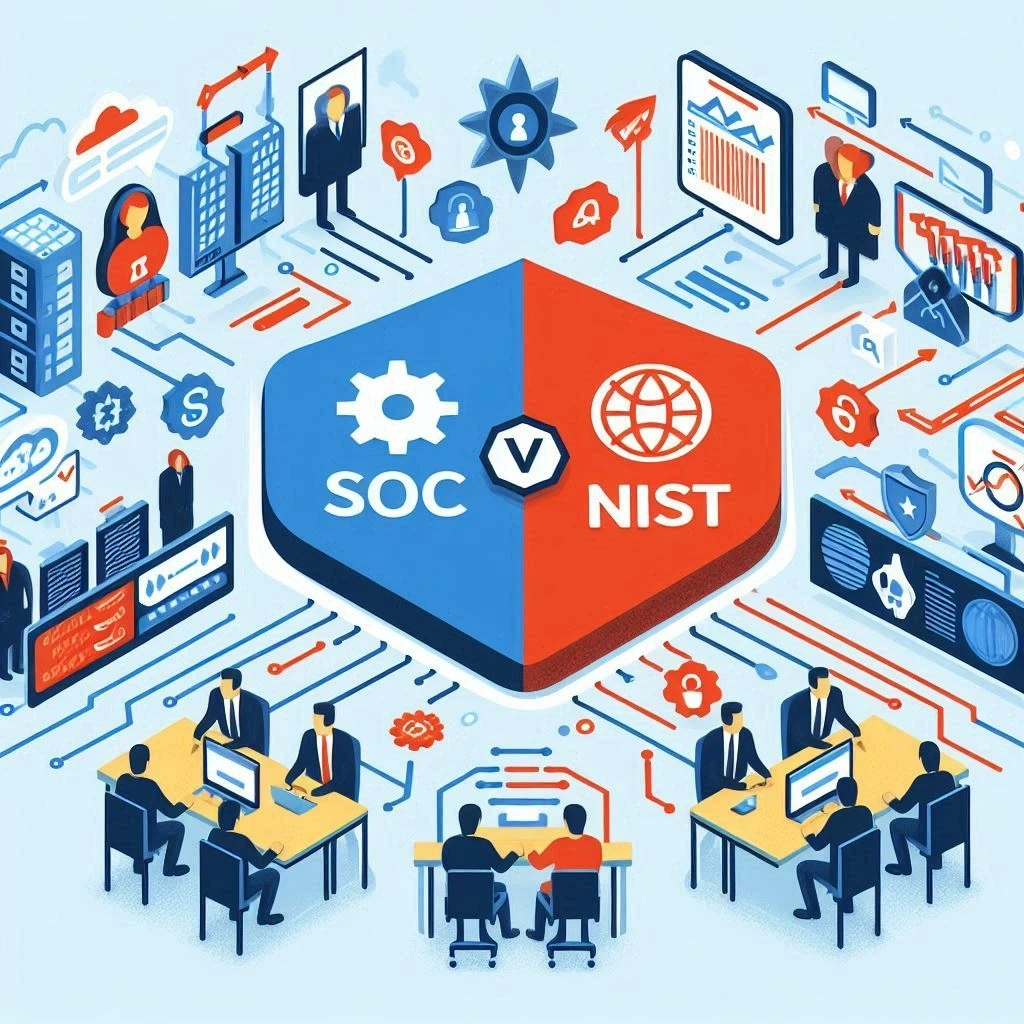In the evolving landscape of internal auditing, the integration of technology has become paramount. One of the most significant advancements in this realm is Robotic Process Automation (RPA), which is transforming how audit teams operate.
Defining Robotic Process Automation (RPA)
Robotic Process Automation (RPA) refers to the use of software robots or “bots” to automate repetitive, rule-based tasks that are typically performed by humans. In the context of auditing, RPA is particularly relevant as it can streamline labor-intensive processes such as data collection, reconciliation, and reporting. By automating these tasks, RPA not only enhances efficiency but also reduces the potential for human error, allowing internal audit teams to focus on more strategic activities that require human judgment and expertise [1][5].
Understanding Continuous Auditing
Continuous Auditing is a modern approach that allows auditors to perform audits on a more frequent basis, rather than relying solely on periodic assessments. This methodology leverages technology to provide real-time insights into an organization’s operations, enabling auditors to identify anomalies and risks as they occur. The importance of Continuous Auditing in internal audit practices cannot be overstated; it enhances the ability to monitor compliance, assess risk, and ensure the integrity of financial reporting continuously, rather than at set intervals [4][8].
Integrating RPA with Continuous Auditing
The integration of RPA with Continuous Auditing presents a new paradigm for internal audit teams. By employing RPA, auditors can automate the collection and analysis of data across various systems, allowing for comprehensive audits of entire populations rather than relying on samples. This capability not only saves significant time—potentially hundreds of hours during each audit—but also improves the accuracy and reliability of audit findings [3][13].
Moreover, RPA can facilitate the continuous monitoring of key controls and processes, enabling auditors to respond swiftly to emerging risks and compliance issues. As internal audit departments increasingly adopt RPA, they can enhance their operational efficiency and effectiveness, ultimately leading to a more robust audit function that is better equipped to meet the challenges of today’s dynamic business environment [10][14].
The combination of RPA and Continuous Auditing is set to redefine the internal audit landscape, providing teams with the tools they need to operate more effectively and deliver greater value to their organizations.
The Role of RPA in Internal Audit
In the evolving landscape of internal auditing, Robotic Process Automation (RPA) is emerging as a transformative force, addressing many of the limitations and challenges faced by traditional auditing methods.
Traditional Auditing Limitations and Challenges
Traditional auditing processes often grapple with several inherent limitations:
- Time-Consuming Tasks: Auditors frequently engage in repetitive, manual tasks such as data entry, reconciliation, and report generation, which can consume significant time and resources [2][10].
- Human Error: The reliance on manual processes increases the risk of errors, which can compromise the accuracy and reliability of audit findings [4][14].
- Limited Data Analysis: Traditional methods may restrict auditors’ ability to analyze large volumes of data effectively, leading to missed insights and opportunities for improvement [6][9].
- Resource Constraints: Internal audit teams often face pressure to deliver results quickly while managing limited resources, making it challenging to focus on higher-value activities [4][5].
How RPA Automates Repetitive Tasks in the Audit Process
RPA offers a solution to these challenges by automating repetitive and rule-based tasks within the audit process. This automation allows auditors to:
- Enhance Efficiency: By automating tasks such as data collection and report generation, RPA significantly reduces the time spent on manual activities, enabling auditors to focus on more strategic analysis and decision-making [5][10].
- Improve Accuracy: RPA minimizes human error by executing tasks consistently and accurately, ensuring that data is processed without the discrepancies that can arise from manual handling [6][14].
- Standardize Processes: Automation leads to standardized and consistent audit processes, which enhances the reliability of audit outcomes and facilitates compliance with regulatory requirements [12].
Examples of RPA Applications in Internal Audit Functions
RPA can be applied in various internal audit functions, transforming how audits are conducted:
- Data Collection: RPA can automate the extraction of data from multiple sources, such as ERP systems and databases, streamlining the data collection process and ensuring that auditors have access to comprehensive and up-to-date information [7][11].
- Report Generation: By automating the generation of audit reports, RPA allows for quicker turnaround times and ensures that reports are generated based on the most current data, enhancing the relevance and timeliness of audit findings [10].
- Continuous Monitoring: RPA enables continuous auditing by facilitating real-time data analysis and monitoring, allowing auditors to identify anomalies and risks as they occur rather than waiting for periodic audits [8][12].
RPA is redefining the internal audit landscape by addressing traditional limitations and enabling continuous auditing processes. By automating repetitive tasks, improving accuracy, and providing real-time insights, RPA empowers internal audit teams to focus on higher-value activities, ultimately enhancing the effectiveness and efficiency of the audit function.
Benefits of Continuous Auditing
Defining Continuous Auditing
Continuous Auditing (CA) is an innovative approach that allows audit teams to perform audits on a more frequent basis, rather than relying solely on traditional periodic audits. This methodology leverages technology, particularly Robotic Process Automation (RPA), to facilitate ongoing monitoring and evaluation of processes and controls. Key characteristics of Continuous Auditing include:
- Real-Time Monitoring: Continuous Auditing enables the constant assessment of transactions and controls, providing immediate feedback and insights.
- Automation of Routine Tasks: By utilizing RPA, audit teams can automate repetitive tasks, allowing for more efficient use of resources and time.
- Data-Driven Decision Making: Continuous Auditing relies on data analytics to inform audit processes, enhancing the overall quality and relevance of audit findings.
Benefits of Continuous Auditing
- Real-Time Insights: One of the most significant advantages of Continuous Auditing is the ability to gain real-time insights into organizational processes. This immediacy allows internal audit teams to identify anomalies and trends as they occur, rather than waiting for the end of a reporting period. This proactive approach can lead to quicker decision-making and more effective risk management [1].
- Increased Accuracy: Continuous Auditing, supported by RPA, enhances the accuracy of audit processes. By automating data collection and analysis, organizations can reduce the likelihood of human error, ensuring that the information used for audits is reliable and precise. This increased accuracy is crucial for making informed decisions and maintaining stakeholder trust [2].
- Timely Risk Detection: Continuous Auditing allows for the early detection of risks and compliance issues. By continuously monitoring transactions and controls, audit teams can identify potential problems before they escalate, enabling organizations to take corrective actions swiftly. This proactive risk management is essential in today’s fast-paced business environment [3].
- Enhanced Compliance and Governance: Continuous Auditing strengthens compliance and governance frameworks by ensuring that organizations adhere to regulatory requirements and internal policies. The ongoing nature of CA means that compliance is not just a periodic check but an integral part of daily operations. This continuous oversight helps organizations maintain a robust control environment and fosters a culture of accountability [4].
- Resource Optimization: By automating routine audit tasks through RPA, Continuous Auditing frees up valuable time for audit professionals. This allows them to focus on higher-value activities, such as strategic analysis and process improvement, ultimately enhancing the overall effectiveness of the internal audit function [5].
Adopting Continuous Auditing methodologies, particularly through the integration of RPA, offers numerous benefits for internal audit teams and operational auditors. By providing real-time insights, increasing accuracy, enabling timely risk detection, and enhancing compliance and governance, Continuous Auditing represents a significant advancement in the auditing landscape. Organizations that embrace this paradigm shift will be better positioned to navigate the complexities of today’s regulatory environment and drive continuous improvement in their operations.
Integrating RPA with Continuous Auditing
The integration of Robotic Process Automation (RPA) into continuous auditing processes represents a significant advancement in the field of internal audit. By leveraging RPA tools, audit teams can enhance their efficiency, accuracy, and overall effectiveness. Here’s how RPA facilitates continuous auditing and the benefits it brings to internal audit teams and operational auditors.
How RPA Tools Facilitate Continuous Auditing Processes
RPA tools are designed to automate repetitive, rule-based tasks, which are prevalent in auditing. This automation allows auditors to focus on higher-value activities, such as analysis and strategic decision-making. Key aspects of how RPA supports continuous auditing include:
- Automation of Data Collection: RPA can automate the gathering of data from various sources, ensuring that auditors have access to the most current information without manual intervention. This capability is crucial for continuous auditing, where timely data is essential for effective monitoring and assessment [6][8].
- Standardization and Consistency: By automating data collection and processing, RPA ensures that the data used in audits is standardized and consistent. This uniformity enhances the reliability of audit findings and allows for more accurate comparisons over time [7].
Workflows Where RPA Can Initiate or Assist in Continuous Auditing Tasks
RPA can be integrated into various workflows to streamline continuous auditing tasks. Some examples include:
- Monitoring Key Risk Indicators (KRIs): RPA can automate the tracking of KRIs, which are vital for assessing the risk landscape of an organization. By continuously monitoring these indicators, auditors can quickly identify potential issues and respond proactively [4][10].
- Real-Time Reporting: RPA can facilitate the generation of real-time reports, allowing auditors to receive immediate insights into compliance and operational performance. This capability supports a more agile auditing approach, enabling teams to adapt their strategies based on current data [3][9].
- Continuous Compliance Checks: RPA can be programmed to perform regular compliance checks against established standards and regulations. This ongoing oversight helps ensure that organizations remain compliant and can quickly address any deviations [2][11].
Impact of Real-Time Data Analysis Enabled by RPA on Audit Quality
The ability to analyze data in real-time is one of the most significant advantages of integrating RPA into continuous auditing. This capability has several implications for audit quality:
- Enhanced Decision-Making: With access to real-time data, auditors can make informed decisions quickly, improving the responsiveness of the audit function. This agility is essential in today’s fast-paced business environment [7][8].
- Improved Audit Coverage: RPA allows for the analysis of larger data sets than would be feasible through manual processes. This comprehensive coverage leads to a more thorough understanding of the organization’s risk profile and operational effectiveness [12][15].
- Increased Audit Efficiency: By automating routine tasks and enabling real-time analysis, RPA significantly reduces the time auditors spend on manual processes. This efficiency allows audit teams to allocate more resources to complex analyses and strategic initiatives, ultimately enhancing the value of the audit function [6][10].
The synergy between RPA and continuous auditing creates a powerful framework for internal audit teams. By automating data collection, standardizing processes, and enabling real-time analysis, RPA not only enhances the efficiency of audit operations but also improves the quality and effectiveness of audits. As organizations continue to embrace these technologies, the role of internal auditors will evolve, positioning them as strategic partners in risk management and organizational governance.
Future Trends in Auditing with RPA
The integration of Robotic Process Automation (RPA) into auditing processes is revolutionizing the landscape of internal audit, particularly in the realm of continuous auditing. As organizations increasingly adopt RPA, several emerging trends are shaping the future of auditing, enhancing efficiency, and enabling auditors to focus on more strategic tasks.
Emerging Trends in RPA and Continuous Auditing
- Increased Automation of Routine Tasks: RPA is streamlining repetitive and time-consuming tasks, allowing auditors to allocate their time to more complex analyses and decision-making processes. This shift not only enhances productivity but also improves the overall quality of audits by reducing human error and increasing consistency in data handling [1][5].
- Continuous Auditing Adoption: The trend towards continuous auditing is gaining momentum, driven by RPA’s ability to facilitate real-time data analysis. This approach allows auditors to monitor transactions and controls on an ongoing basis, rather than relying solely on periodic reviews. As a result, organizations can identify and address issues more swiftly, enhancing risk management and compliance efforts [6][11].
- Integration with Advanced Technologies: The future of auditing will likely see RPA working in tandem with advanced technologies such as artificial intelligence (AI) and machine learning (ML). These technologies can enhance RPA capabilities by enabling more sophisticated data analysis, predictive analytics, and anomaly detection, thereby providing deeper insights into audit processes and outcomes [3][15].
Enhancing RPA Capabilities with AI and Machine Learning
- Data-Driven Insights: The integration of AI and ML with RPA can significantly enhance the ability of auditors to derive actionable insights from large volumes of data. By leveraging these technologies, auditors can automate the identification of patterns and trends, leading to more informed decision-making and strategic planning [4][9].
- Improved Risk Assessment: AI can augment RPA by providing advanced risk assessment capabilities. Machine learning algorithms can analyze historical data to predict potential risks, allowing auditors to focus their efforts on high-risk areas and improve the effectiveness of their audits [10][14].
Future Skill Sets for Auditors in an RPA-Driven Environment
- Technological Proficiency: As RPA and related technologies become integral to auditing, auditors will need to develop a strong understanding of these tools. This includes familiarity with RPA software, data analytics platforms, and AI applications, enabling them to effectively leverage technology in their audit processes [8][12].
- Analytical Skills: The ability to analyze and interpret data will be crucial in an RPA-driven environment. Auditors will need to enhance their analytical skills to extract meaningful insights from automated processes and make data-driven recommendations [2][13].
- Adaptability and Continuous Learning: The rapid evolution of technology necessitates that auditors remain adaptable and committed to continuous learning. Staying updated on emerging trends and advancements in RPA, AI, and data analytics will be essential for auditors to maintain their relevance and effectiveness in the field [7][11].
The future of auditing is being reshaped by RPA and its integration with advanced technologies. As internal audit teams embrace these changes, they will not only enhance their operational efficiency but also position themselves as strategic partners within their organizations. By developing the necessary skills and adapting to this new paradigm, auditors can ensure they are well-equipped to navigate the evolving landscape of auditing.
Conclusion
The integration of Robotic Process Automation (RPA) into internal auditing represents a significant shift towards a more dynamic and efficient auditing landscape. RPA’s transformative potential for continuous auditing cannot be overstated, as it allows auditors to move beyond traditional sampling methods and engage in comprehensive data analysis. By automating repetitive and rule-based tasks, RPA enables audit teams to focus on higher-value activities such as critical thinking, judgment, and strategic decision-making, ultimately enhancing the overall quality of audits [6].
Internal audit teams are encouraged to embrace this technology, as it not only streamlines processes but also increases the frequency and depth of testing. With RPA, organizations can access standardized, consistent, and accurate audit data, which facilitates a shift towards continuous auditing models. This transition not only improves efficiency but also enhances the ability to identify anomalies and exceptions in real-time, thereby strengthening the control environment [4][8][11].
As the auditing profession evolves, it is crucial for internal audit teams to explore RPA solutions that are tailored to their specific functions. By doing so, they can leverage the full benefits of automation, ensuring that their audit processes are not only effective but also aligned with modern business practices. The call to action is clear: invest in RPA technologies to revolutionize your auditing processes and position your team at the forefront of the internal audit profession [10][14].
Find out more about Shaun Stoltz https://www.shaunstoltz.com/about/
This post was written by an AI and reviewed/edited by a human.



